Join More Than 50,000+ Subscribers and get latest camera news and rumors
NEW CAMERA VIDEOS ON YOUTUBE
Download Our Android App
|
By admin, on June 9th, 2024
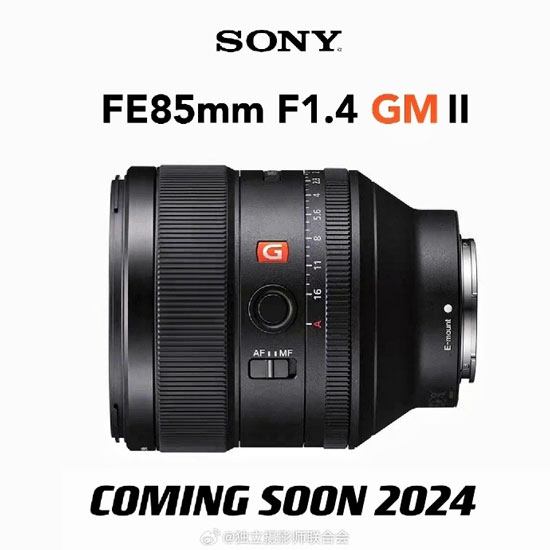
Take a look at the list of Sony’s Upcoming Camera and Lenses Updated List below, we have selected the name of camera and lenses expected to arrive in next few months from Sony,
- Sony FE 85mm F1.4 GM II is expected to be released within the next month.
- The ZV-E10 II is also expected to be released in the next 1-2 months.
- Sony’s ultra-wide 24-70mm F2.0 lens is set to be released in the next 1-2 months. There are rumors that it might be launched alongside the ZV-E10 II, or possibly a little later.
- Sony’s FX full-frame new camera is scheduled for an official release in July-August, potentially being a successor to the FX9 model.
- Sony α7S IV is expected to be released in August-September. Rumors suggest that the new camera will feature a brand-new 24 million pixel Exmor R sensor, supporting 6K oversampling, 60fps 4K video recording, and 120fps 4K video recording in Super35 mode. The new model will have significant differences in features and positioning compared to its predecessor (A7S III), with a lower price range expected (between 2799−2799−3099).
- There may be a new α series camera to be released (in October-November), but there are no details available at the moment. Additionally, an unknown mysterious new camera is planned for release in October-November.
source webio
What else we are also expecting –
Sony A7 V is set to be released in Q4 of 2024 is everything goes on schedule, the camera will have an uploadable LUT option, a dedicated AI chip for AI Auto framing, and an upscaled AF performance, the user will notice a Major upscaling in the Video performance of the camera.
Sony FX6 Mark II in the wild – Sony FX6 Mark II prototypes are in the wild and the announcement will happen in Q4 of 2024 if everything goes under schedule. The Sony FX6 was announced back in November 2020 and was one of Sony’s most popular cinema line cameras.
Follow us on our social pages FACEBOOK | TWITTER | INSTAGRAM, If you have time –>see more Camera News and Sony Alpha Rumor
By admin, on June 6th, 2024
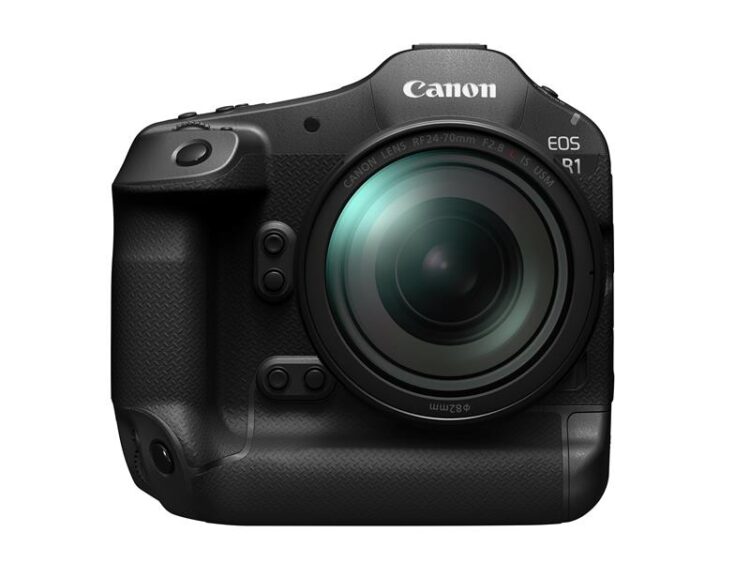
One of the most trusted sources Just share this, not able to configure what does this exactly mean
Ultra-high-speed and large-bandwidth RS (EOS R1) >> High-speed and large-bandwidth GS (A9M3) > High-speed and small-bandwidth RS (Z9\Z8\A1) > Medium-speed and large-bandwidth RS (EOS R3\X-H2S) >> Medium-speed and small bandwidth RS(A9) > Low-speed RS (stacked sensor for various monitoring purposes)
Let me know in the comments if u guys able to crack this
Get LIVE RUMORS –> FACEBOOK | TWITTER | INSTAGRAM to get live news + Canon rumors 24X7
source E8M_8888
By admin, on June 6th, 2024
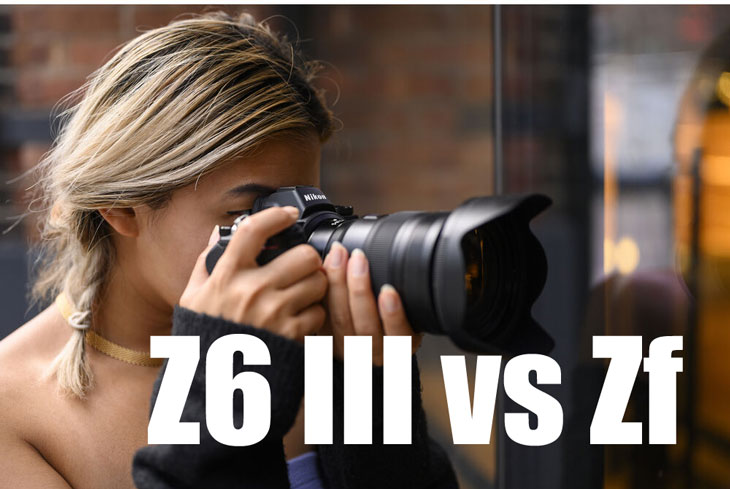
As you can see in the table below, the Z6 Mark III camera features a newly developed 24.5 BSI FX-format full-frame Partially Stacked CMOS sensor with an upscaled design that enhances low-light performance and improved dynamic range compared to the sensor we have in the Nikon Zf/ Z6 II. The readout speed of the sensor also improved and
Dual Expeed 7 image processor: Inside the Nikon Z6 Mark 3 camera, with the help of the new dual Expeed 7 image processor able to extract 6K video resolution up to 60 frames per second in 12-bit N-RAW format. Additionally, you can also shoot continuously up to 120 frames per second in DX crop mode, all due to the fabrication of the dual Expeed 7 image processor inside the Z6 Mark 3 camera body.
Sensor Readout Speed – Nikon Z6 III vs Nikon ZF
Recently announced Nikon Z6 Mark 3 camera with its Partially stacked CMOS sensor is approximately 2.34x faster than the Nikon ZF 24 megapixel FX format sensor. So we are not commenting on the image quality here; of course, we will compare the image quality when the samples of the camera come out. But at the very same time, based on the readout speed of both cameras, the overall calculation that we are getting is that the Z6 Mark 3 camera is at least 2.34x faster than the ZF sensor, resulting in less rolling shutter effect in motion pictures and images.
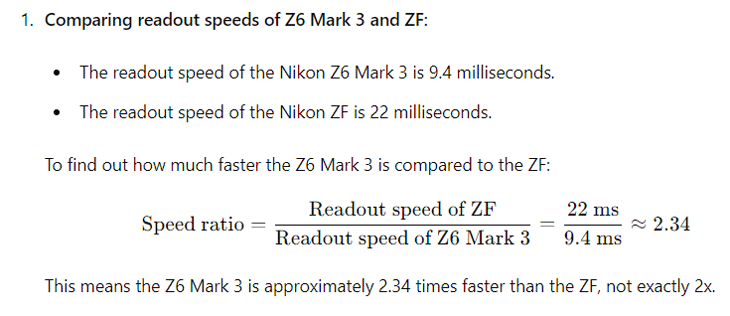
The readout speed of the Nikon Z6 Mark 3 camera while capturing 4K 60p video in 10-bit mode is approximately 9.4 milliseconds, whereas the readout speed of Nikon ZF camera while capturing 4K videos at 4k 30p Video in 10 bit is approximately 22 milliseconds, which is approximately 2.34x more than the Z6 Mark 3 camera. As shown in the calculation above. As we know, Nikon cameras are not able to capture 6kps Raw videos, so the readout speed is not available for that specific set of data.
5.76 million-dot electronic viewfinder: This helps photographers capture perfect decisive moments with a single click. It provides the vision and accuracy needed by professional photographers. No one else in the competition uses such a high-resolution electronic viewfinder in their cameras.
Continuous Shooting Speed
14 FPS mechanical shutter and 20 FPS electronic shutter in full resolution: When shooting in NRAW, the maximum continuous shooting speed is 14 frames per second with the mechanical shutter and up to 20 frames per second with the electronic shutter. The maximum shooting speed can be obtained is 120 frames per second with the electronic shutter in DX mode.
The camera will feature the same artificial intelligence image stabilization algorithms as seen in the Nikon ZF camera, The IBIS center moves along with the AF point of the camera, so you get a true 8 Stops of IBIS from your camera. So, Nikon Z6 Mark 3 camera exhibits a class-leading image stabilization system that no competitor offers at this present time.
The autofocus is said to be much improved compared to the existing Nikon Z8 autofocus tracking algorithms. The autofocus coverage on the sensor is approximately 100%, which is not even possible with the latest Nikon ZF camera, which has a coverage of approximately 90% of the frame. The Z6 Mark 3 camera’s autofocus tracking mechanism has been upscaled to match the performance of competitors like Sony and Canon.
In terms of video resolution, the camera is able to record 6K videos up to 60 frames per second in N-RAW format internally on CFexpress Type B cards. For everything recorded in RAW, it is recommended to use CFexpress Type B cards. 4K recording up to 120 frames per second is available in DX mode.
Price-wise, the camera costs more than the Nikon ZF, so it’s now decision time. If the extended set of features, such as enhanced video core specifications or the maximum burst speed of up to 120 frames per second, matter to you, then you should invest in the Z6 Mark 3 camera. Otherwise, the Nikon ZF is still a good option with extensive manual control.
| Feature |
Nikon Z6 III |
Nikon Zf |
Model Code
|
N2214 |
N2137 |
| Sensor |
24.5 MP BSI, low light, high dynamic range [New Sensor] |
24.5 MP BSI |
| Processor |
EXPEED 7 Dual |
EXPEED 7 |
| Video Capabilities |
6K 6048 x 4032, 12-bit NRAW,
4K 60fps ProRes RAW, Full HD 240fps 8-bit crop |
4K UHD 30p, Full HD 60p |
| Viewfinder |
5.76m dot EVF |
3.68m dot EVF |
| LCD Screen |
Improved vari-angle |
Vari-angle LCD |
| Shooting Performance |
14 fps mechanical, 20 fps electronic (RAW, 14-bit),
120 fps JPEG (DX) |
14 fps continuous shooting |
| Record Time |
37-120 minutes |
N/A |
| Shutter Speed |
1/16000 sec |
1/8000 sec |
| Shutter Type |
Mechanical & electronic |
Mechanical & electronic |
| Autofocus Points |
299 |
299 |
| Focus Algorithm |
Updated, better than Z8/Z9 |
Similar to Nikon Z8 |
| AF Coverage |
Near 100% |
90% |
| Stabilization |
7 or 8-stop VR (same as Nikon Zf) |
7-stop VR |
Pixel-Shift HR Mode
|
Yes |
Yes |
| Memory Cards |
CFexpress + SD |
CFexpress + SD |
| Battery |
EN-EL15 |
EN-EL15c |
| Battery Pack |
Nikon MB-N14 |
Nikon MB-N11 |
| Body Design |
Hybrid between Z6 and Z8 |
Retro-inspired |
| Dimensions |
3-5mm wider, a few mm thicker, 2-3mm taller than Z6II |
Similar to Z6 |
| Weight |
700-750g |
705g |
| USB Port |
USB-C 3.0 (SuperSpeed) |
USB-C |
| HDMI |
HDMI A version 2.1 (full-size) |
HDMI mini |
| Wireless Connectivity |
WiFi 2.4/5 GHz, Bluetooth LE Connect |
WiFi 2.4/5 GHz, Bluetooth |
| Cooling Design |
New cooling design |
Standard |
| Firmware Updates |
Online |
Standard |
| Ergonomics |
Better compared to Z6 |
Retro-styled |
| Price |
Around €3,000 in Europe |
Approximately €2,499 / $2,399 |
| Announcement Date |
June 10-12 |
September 2023 |
| Shipping Start Date |
Mid-July |
October 2023 |
| Kit Options |
Body only, or with 24-70mm f/4, 24-120mm f/4, and another lens |
Body only, or with 24-70mm f/4 |
Follow us on our social pages FACEBOOK | TWITTER | INSTAGRAM to get live news + Nikon Rumors 24X7.
By admin, on June 6th, 2024
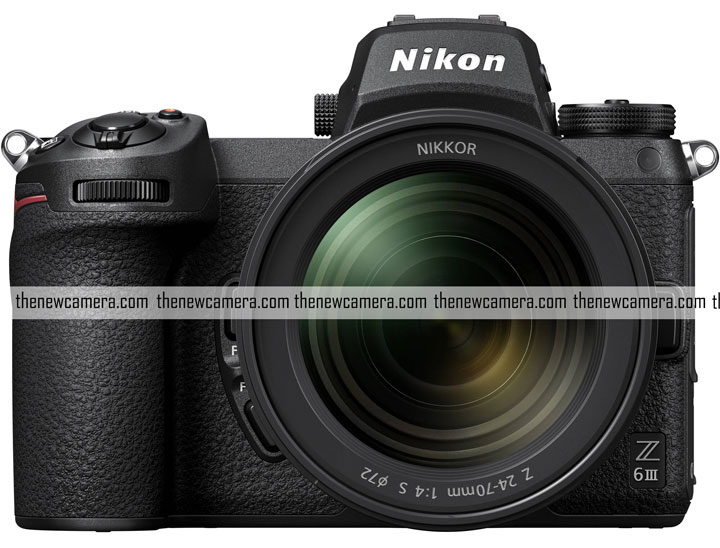
Finally, we have the updated core specifications of the Nikon Z6 Mark III camera. The camera is rumored to feature upscaled video core specifications and the ability to record 6K video in 12-bit NRAW. The camera will also have Dual Expeed 7 Image processor to maximize the still and video performance of the camera
Nikon Z6 III Specifications
Model: N2214
Sensor: 24.5 MP BSI, optimized for low light and high dynamic range
Processor: New image processor (Dual EXPEED 7 engine)
Video Capabilities:
- 6K resolution at 6048 x 4032, full-frame, 12-bit NRAW
- 4K 60fps, full ProRes RAW
- Full HD at 240fps (8-bit crop)
Viewfinder and Screen:
- 5.76 million dot EVF
- Improved vari-angle LCD screen
Shooting Performance:
- 14 fps mechanical, 20 fps electronic (RAW, 14-bit)
- 120 fps JPEG stills
- Record time: 37-120 minutes
- Shutter speed: 1/16000 sec
- Mechanical and electronic shutter
Autofocus:
- 293/297 AF points
- Updated focus algorithm surpassing Z8/Z9
- Nearly 100% AF coverage
Stabilization:
- 7 or 8-stop VR system (same as Nikon Zf)
- Pixel-shift capability
Storage and Battery:
- CFexpress and SD memory cards
- EN-EL15 battery
- Nikon MB-N14 battery pack
Design and Ergonomics:
- Hybrid body design between Z6 and Z8
- Larger dimensions than Z6II: 3-5mm wider due to LCD hinge, a few mm thicker, 2-3mm taller overall
- Improved ergonomics
- 30-40g heavier than Z6II
- Button layouts similar to Z6II with some elements from Z8
- USB-C 3.0 (SuperSpeed)
- HDMI A version 2.1 (full-size)
- WiFi 2.4/5 GHz, Bluetooth LE Connect
Cooling: New cooling design
Other Features:
- Online firmware updates
- New Nikon NX Studio version with Z6 III support
Pricing and Availability:
- Expected price around €3,000 in Europe (lower in the US)
- Official announcement: next week (June 10-12)
- Shipping expected to start in mid-July
- Current Nikon Z6II will be in production until the end of the year at a discounted price
Kit Options:
- Available as body only or in a kit with the 24-70mm f/4, 24-120mm f/4, and an additional lens
Above, we have some new information about the Z6III, and it looks like it will be a high-performance machine with improvements in all areas, including video mode, continuous recording time, continuous shooting speed, EVF resolution, and AF performance. It has been stated that the Z6III will be the best camera in its class, and it certainly looks like it will be a fairly high-spec model for the mid-range.
However, one thing that concerns me is the price, 3,000 euros (the Zf is 2,550 euros on Amazon Germany), which is a bit high for a mid-range device. Btw., lets wait and see what happend next, if we get any new information we will post an update.
Follow us on our social pages FACEBOOK | TWITTER | INSTAGRAM to get live news + Nikon Rumors 24X7.
source – NR.com
By admin, on June 6th, 2024
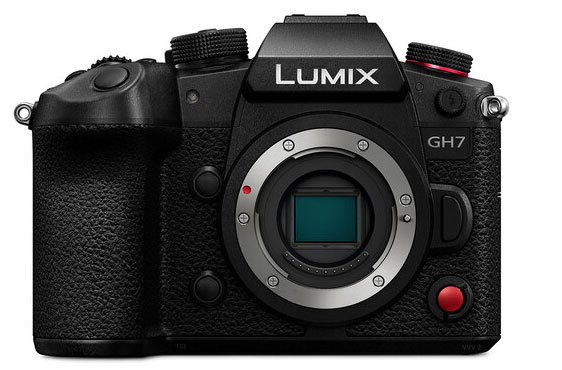
Panasonic GH7 Press Release
Panasonic is proud to introduce the new LUMIX GH7 – the latest flagship model of the Micro Four Thirds mirrorless LUMIX G Series.
The LUMIX GH7 delivers outstanding video performance, wide dynamic range with a newly developed 25.2MP BSI CMOS sensor and improved AF performance with PDAF (Phase Detection Auto-Focus). To support the efficient workflow required in professional production environments, it is now newly equipped with Apple ProRes RAW*1 internal recording and a World’s first 32-bit float recording*2, which eliminates the need to adjust sound recording levels during shooting.
With the rapid increase in demand for video content in recent years, the number of small teams of video creators is increasing along with the demand for further improvement in the quality of mirrorless cameras with excellent video performance and portability. Since its release in 2009, our LUMIX GH series has developed a strong reputation among creators and video production teams, as a model renowned for its shooting performance, innovative features and reliability.
The LUMIX GH7 is a next-generation mirrorless camera that meets the needs of creators, whatever their creative field may be.
Main Features
- High performance, fast response, and excellent mobility
- 25.2MP BSI CMOS sensor with high resolution and fast response, along with 13+ stop dynamic range boost*3 with rich gradation
- Adopting PDAF for high-speed, high-precision AF performance, and newly added real-time auto-focus recognition AF for airplane and train
- Improved image stabilization technology, including perspective distortion correction for videos and High mode in Active I.S. to enable powerful compensation when shooting on the move
- Enhanced video quality and optimized workflows from shooting to post-production
- Internal recording of 5.7K 30p ProRes 422 HQ and ProRes RAW HQ*1.
- World’s first 32-bit float recording*2, eliminating the need to adjust audio recording levels during shooting when using the new XLR microphone adaptr, DMW-XLR2 (sold separately).
- Allows users to load original LUT files and apply new color looks directly to videos and photos with REAL TIME LUT.
- Enables proxy recording for workflow efficiency and supports native Camera to Cloud integration with Adobe’s Frame.io enabling images and videos to be automatically uploaded, backed up, shared, and worked on jointly via the cloud.
- Open Gate recording to enable flexible framing for any social media platform or client needs.
- Reliable in the video production field
- Unlimited video recording made possible with efficient heat dissipation processing and the integration of a cooling fan*4.
- Convenient tilt-free angle monitor that does not interfere with HDMI or USB cables when tilted
- Able to withstand harsh environments with dust, splash resistance*5, and freeze-resistance down to -10 degrees Celsius/14 degrees Fahrenheit.
By admin, on June 5th, 2024
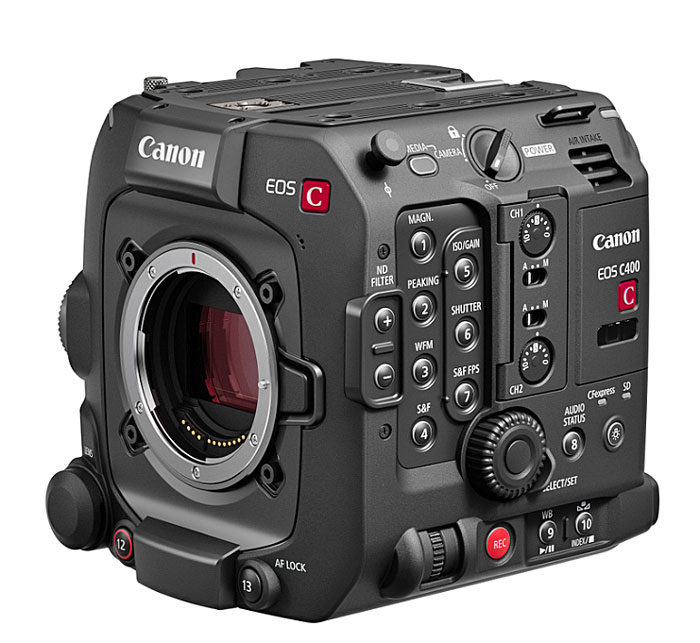
Canon Announces New EOS C400 6K Full-Frame RF Mount Cinema Camera and RF-Mount CINE-SERVO Lens, take a look at the Major specifications of the camera, price, and press release.
Get Canon C400 from B&H Store
Canon C400 Pricing and Availability
The Canon Cinema EOS C400 Full-Frame RF Mount Camera is scheduled to be available in September 2024 for an estimated retail price of $7,999.00*. The CINE-SERVO 17-120mm will be available in October 2024 for an estimated retail price of $23,850.00*. The MOUNT ADAPTER PL-RF will be
Canon EOS C400 Camera Specifications
- Sensor
- 6K full-frame, back-illuminated Stacked CMOS sensor
- Triple-base ISO: 800, 3200, 12,800
- Supports Dual Pixel CMOS Autofocus II
- Improved light-capturing efficiency and faster readout speed
- 4K image quality from 6K oversampling
- Recording Capabilities
- 6K full frame up to 60p in 12-bit Cinema RAW Light
- 4K RAW up to 120fps
- 2K RAW up to 180fps
- 10-bit 4:2:2 with 6K oversampling, up to 120P
- New codecs: XF-AVC S and XF-HEVC S
- Recorded to CFexpress slot, with proxy and sub-recording options to SD Card slot
- Production Features
- Dedicated 12-pin lens terminal for broadcast and cine-servo lenses
- Interfaces: mini-XLR audio inputs, DIN connectors for time code, genlock, return video, 12G-SDI, 3G-SDI, full-size HDMI
- Built-in Wi-Fi connectivity and Ethernet
- SRT protocol for IP streaming of video and audio
- Remote control via Ethernet or Wi-Fi; supports Canon Multi-Camera Control app, browser remotes, RC-IP100/RC-IP1000 controllers
- Metadata and Virtual Production
- Frame-by-frame metadata support for virtual production workflows
- Built-in compatibility with Canon RF5.2mm F2.8 L dual fisheye lens for 180-degree VR shooting
New Canon CINE-SERVO Lens
- Lens
- RF-mount version of the CINE-SERVO 17-120mm cinema lens
New Accessory
- Mount Adapter
- First MOUNT ADAPTER PL-RF for Canon cameras
Canon C400 Press Release
New EOS C400 Camera Features a 6K Full-Frame, Back-Illuminated CMOS Sensor, With Triple-Base ISO; New CINE-SERVO Lens Compatible with RF Mount Cinema Cameras
MELVILLE, N.Y., June 5, 2024 —Canon U.S.A. Inc., a leader in digital imaging solutions, is pleased to announce the new Canon EOS C400 cinema camera, with a native RF-mount and full-frame, back- illuminated stacked CMOS sensor, designed with the film and live production markets in mind. Canon is also proud to announce the company’s first MOUNT ADAPTER PL-RF, and an RF-mount version of the popular and award-winning CINE-SERVO 17-120mm cinema lens.
“Canon is proud to provide filmmakers and videographers with a variety of tools to capture high-quality and visually stunning images,” said Brian Mahar, senior vice president and general manager, Canon U.S.A., Inc. “The new camera and lens strengthen Canon’s already impressive lineup of cinema products.”
EOS C400 Camera Back-Illuminated Stacked Sensor
For the first time in the cinema EOS system, the Canon EOS C400 camera features a newly developed 6K full-frame, back-illuminated CMOS sensor, with triple-base ISO, allowing the camera to deliver stunning imagery in a wide range of lighting conditions. The base ISOs of 800, 3200, and 12,800 maximize the full dynamic range of the camera.
An additional benefit of the EOS C400 camera’s sensor is the support for the next generation of Canon’s Dual Pixel CMOS Autofocus, Dual Pixel AF II. The back-illuminated stacked positioning offers better light-capturing efficiency, which widens the area of the sensor that can be used for autofocusing. The sensor also empowers faster readout speed, as well as better 4K image quality from 6K oversampling.
EOS C400 Camera Recording Options
The EOS C400 camera records in 6K full frame up to 60p in 12-bit Cinema RAW Light. By changing the sensor mode, the camera can record 4K RAW up to 120fps and 2K RAW up to 180fps. This is all
recorded in Canon’s latest iteration of Cinema RAW Light, which provides three different recording modes to choose from depending on your file size preference and workflow.
Other recording options include the Canon-developed, industry standard XF-AVC codec which can be recorded in 10-bit 4:2:2 with oversampling from the 6K sensor, helping to create rich detail and smooth
imagery, at frame rates up to 120P, without the need for cropping the image from the sensor. Canon is also introducing two new recording codecs into the EOS C400 camera, XF-AVC S and XF-HEVC S. These formats feature an easy-to-manage naming system and folder structure, while recording in the familiar MP4 format and preserving metadata.
All of these options are recorded to the camera’s CFexpress slot with sub-recording and proxy options available to the SD Card slot, which allows for simultaneous recording even when shooting RAW.
EOS C400 Camera Production Options
For live productions, the EOS C400 camera body features a dedicated 12-pin lens terminal for broadcast and cine-servo lenses, a variety of output and input interfaces including mini-XLR audio inputs, DIN connectors for time code, genlock and return video, 12G-SDI and 3G-SDI monitor outputs, a full-size HDMI output, built-in Wi-Fi connectivity, Ethernet and much more. The camera also features SRT protocol for IP streaming of video and audio. For shooting scenarios where the camera will be controlled remotely, you can use the Ethernet port or Wi-Fi connectivity to enable remote control, including support for the Canon Multi-Camera Control app, browser remotes, or the Canon RC-IP100 or RC-IP1000 controllers via use of the included XC protocol.
The EOS C400 camera can also provide frame-by-frame metadata in real-time and post-production to support virtual production workflows. Ready for 180-degree VR shooting, the EOS C400 camera has built-in compatibility with the Canon RF5.2mm F2.8 L dual fisheye lens.
CINE-SERVO 17-120mm Cinema Lens
This latest cinema lens from Canon builds upon the legacy of the company’s CINE-SERVO line, with the added benefit of a native RF mount. The additional pins of the RF mount increase communication with RF-mount cameras such as the EOS C400, enabling auto focus, distortion correction and metadata output for virtual productions. The lens comes in either RF or PL mount configurations, with the PL mount version supporting ZEISS eXtended Data and ARIA (Automatic Restoration of Illumination Attenuation)i.
The lens’ new e-Xs V servo drive unit helps to improve its focus and iris speed, enables focus breathing compensation, and includes a USB-C connector for copying drive unit configurations.
PL to RF Mount Adaptor
Canon is also introducing the newly developed MOUNT ADAPTER PL-RF. This adapter opens up a broad range of PL mount lenses to the EOS C400 camera. The adapter maintains compatibility for Cooke i/Technology metadata communication between camera and lens and includes locking plates to help achieve maximum mount strength. To learn more about these new products and Canon’s array of cinema solutions, please visit here.
By admin, on June 5th, 2024

Canon announced the New RF 35mm F1.4 Lens with HYBRID MOTORS, the lens uses Ultrasonic as well as Voice Coil Motor to upscale AF speed, accuracy as well as no focus breathing.
CANON ANNOUNCES FIRST LENS IN SERIES OF FIXED FOCAL LENGTH RF HYBRID LENSES – RF35MM F1.4L VCM
New Portable Speedlite with New Multi-Function Shoe Design Also Available
MELVILLE, N.Y., – June 5, 2024 — Canon U.S.A., Inc., a leader in digital imaging solutions, today announced the RF35mm F1.4 L VCM1 lens and Speedlite EL-10 flash. The new RF35mm lens is the first in a series of fixed focal length RF lenses with hybrid video and still design, and the Speedlite EL-10 integrates with Canon’s new multi-function shoe design, for users of recent Canon EOS cameras.
Answering the needs of many professional high-level photographers, the new RF35m F1.4 L VCM lens can be looked upon as a standard lens for video and still users — for example, those who use the EOS R5 and EOS C70 cameras. This lens is the beginning of a new hybrid lens series and with its fixed focal length, fills a gap as there is not a fixed focal length lens wider
than 50mm in the L-series — until now. Ideal for low-light, the RF35mm F1.4 L VCM lens features a manual iris (aperture) ring which helps provide better control when shooting movies. The lens allows very little focus “breathing” as focus is moved, and it’s highlighted by two
Aspherical lens elements and two ultra-low Dispersion glass elements. Overall, this lens has the outstanding L-series optical design many professionals have grown accustomed to. In addition, the lens can be used with the newly announced Canon EOS C400 cinema camera, further
reinforcing Canon’s full support of the video market.
“The new RF35mm F1.4 L VCM lens is the answer for high-level video in the mirrorless market
– while also providing still-imaging storytellers the durability and optical performance that is synonymous with Canon lenses,” said Brian Mahar, senior vice president & general manager, Canon U.S.A., Inc.
The Speedlite EL-10 flash is designed for the amateur photographer who is stepping into the
mirrorless world, and the veteran user who is looking to get reacquainted with flash photography. The multi-function shoe helps the still imagery storyteller by providing immediate access to the flash control menu, and either an on-camera EL-10 or the optional super-compact Speedlite Transmitter ST-E10 assists with triggering from one through up to fifteen off-camera flashes2.
The Speedlite EL-10 is a radio-based wireless flash with 2nd-curtain sync capabilities, and leverages four AA batteries instead of a separate battery that requires charging — making operation more streamlined for some users. In addition, it features a Custom Flash Mode function, allowing the end-user to register and store up to three sets of flash settings, and is
approximately the same size and weight as its predecessor the Speedlite 430EX-III RT — while also pushing out the same amount of power. Automatic balanced fill flash is a key benefit to
using flash photography, whether during daytime or low light with a slow shutter speed, and the Speedlite EL-10 is an excellent gear bag addition to achieve that creative look in one’s photos.
“Flash photography is a simple yet versatile way to add drama to one’s photos and with Canon’s steadfast commitment to reliability, the Speedlite EL-10 provides a full-circle Canon shooting experience,” continued Brian Mahar, senior vice president & general manager, Canon U.S.A., Inc.
Canon RF 35mm F1.4L Price & Shipping Information
Canon RF 35mm F1.4 L VCM lens is expected to be available in June for an estimated retail piece of
$1,499.00 and the Speedlite EL-10 will also likely be available in June for an estimated retail price of $249.99*. For more information, please visit usa.canon.com.
|
KEEP THIS BLOG ALIVE - Support New Camera Buy Canon Lenses, Buy Music CD or Digital Camera at amazon it helps this site, and you do not pay anything extra, it is just a way to help support this site.

|
















